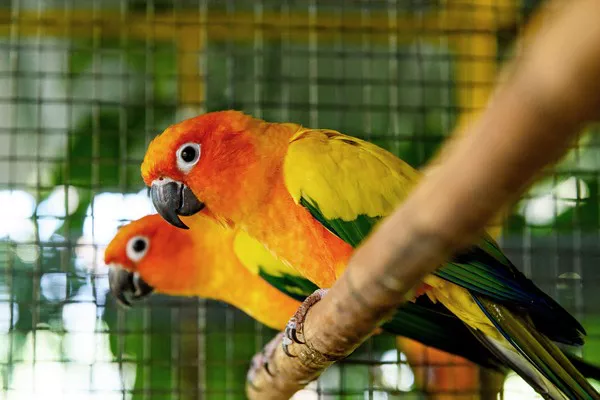Corn snakes, scientifically known as Pantherophis guttatus, are one of the most popular species of pet snakes, admired for their docile nature, beautiful coloration, and relatively easy care. These non-venomous constrictors are native to the southeastern United States, where they inhabit grasslands, forests, and farmlands. Corn snakes primarily feed on small rodents, birds, and sometimes lizards, which they capture and kill through constriction. Given their diet in the wild, it’s important for potential pet owners to understand what they can and cannot feed these snakes, ensuring they remain healthy and thrive in captivity.
A common question that arises among snake enthusiasts and potential pet owners is whether corn snakes can eat raw meat, similar to how they might consume prey in the wild. This article will explore the dietary needs of corn snakes, what raw meat actually consists of, and whether raw meat is suitable for a corn snake’s diet. We will also discuss the implications of feeding raw meat to corn snakes, looking at both the nutritional content and possible health risks associated with it.
Understanding the Corn Snake’s Natural Diet
To better understand whether corn snakes can eat raw meat, we need to first explore their natural diet. In the wild, corn snakes are primarily carnivorous, and their diet consists mostly of small mammals such as mice, rats, and other rodents. They may also consume birds, eggs, and occasionally lizards or amphibians. Their feeding strategy involves using their sharp teeth to grasp and hold onto prey, while they constrict it to suffocate it before swallowing it whole. Corn snakes, like other constrictor species, are not venomous and do not inject toxins into their prey.
The digestion process of a corn snake is unique and efficient, as their bodies are adapted to handle large meals in a single feeding session. A snake’s stomach is capable of expanding significantly to accommodate prey that is much larger than the snake’s head. This adaptation allows them to ingest prey whole, and their long, flexible bodies are built to slowly digest their food over the course of several days.
Corn snakes generally consume prey that is raw and unprocessed, just as their wild counterparts would. Therefore, their digestive systems are designed to handle raw meat in the form of whole animals, rather than just muscle tissue or chunks of meat.
The Composition of Raw Meat
Before diving into whether raw meat is appropriate for corn snakes, it’s essential to understand what raw meat typically consists of. When referring to raw meat, many people think of cuts of muscle tissue from animals, such as beef, chicken, or pork. This is meat that is uncooked and has not undergone any form of preservation or processing.
Raw meat can vary in its nutritional profile depending on the animal it comes from, but generally, it contains the following components:
Proteins: Raw meat is rich in proteins, which are the building blocks of muscle tissue. For snakes, protein is essential for growth, muscle maintenance, and overall health.
Fats: Raw meat also contains fats, which are a concentrated energy source. These fats help the snake maintain its energy levels, especially in between feedings.
Water: Fresh meat contains a significant amount of water, which can help with hydration, though this is not sufficient to meet the snake’s full water needs.
Minerals and vitamins: While raw meat contains some micronutrients, it generally lacks the full range of vitamins and minerals that a snake needs.
However, when discussing raw meat in the context of feeding to a corn snake, it’s important to differentiate between the meat of a small animal (like a mouse or rat) and the muscle tissue from a larger animal (like beef or chicken). In the wild, corn snakes consume whole prey, which includes not only the meat but also the bones, organs, and other parts of the animal, which contribute to their overall nutritional intake.
Nutritional Needs of Corn Snakes
For corn snakes to remain healthy in captivity, it is crucial that their diet meets their nutritional needs. These needs vary depending on the snake’s age, size, and activity level, but in general, corn snakes require the following nutrients:
Protein: As obligate carnivores, corn snakes need high-quality protein to grow and maintain their muscle mass. This protein is best obtained from whole prey, such as mice or rats, which provide an ideal balance of nutrients.
Fats: While protein is the primary nutrient, corn snakes also need fats for energy. These fats are typically provided in the form of the fatty tissues of their prey.
Calcium: Calcium is essential for bone health and muscle function. While snakes do not need a large amount of calcium, it is vital for proper bone development and for preventing metabolic bone disease.
Water: While corn snakes derive some moisture from their prey, fresh drinking water should always be available to ensure proper hydration.
The Risks of Feeding Raw Meat to Corn Snakes
The main concern with feeding corn snakes raw meat that does not come from whole prey (like rodents or birds) is that it may not provide all the necessary nutrients. When a corn snake consumes whole prey, it ingests not only the muscle tissue but also the bones, organs, and other parts of the animal. These additional components contribute to the snake’s nutritional needs, offering a broader spectrum of vitamins, minerals, and other essential nutrients.
On the other hand, raw meat from larger animals like beef, chicken, or pork lacks these important nutritional components. For example, raw beef or chicken may contain plenty of protein, but it will be lacking in essential vitamins and minerals that a snake needs to stay healthy.
Feeding raw meat to a corn snake can also lead to a number of potential health problems:
Imbalanced diet: Raw meat from domestic animals such as beef or chicken does not provide the necessary range of nutrients that a corn snake would get from eating whole prey. This could lead to deficiencies in important vitamins and minerals, such as calcium and vitamin D3, which are vital for proper bone and muscle function.
Obesity: Meats like beef or chicken can be higher in fat than the diet of a wild rodent, potentially leading to weight gain and obesity in snakes. This can have a negative impact on their overall health and lifespan.
Digestive problems: Corn snakes are adapted to digest whole prey, including bones and fur, which help them maintain a healthy digestive system. Raw meat, especially if it lacks bones, can be more difficult for the snake to digest and may lead to gastrointestinal issues or blockages.
Risk of bacterial contamination: Raw meat, especially if it comes from an animal that has not been properly handled or stored, can be contaminated with harmful bacteria like Salmonella or E. coli. These bacteria can cause severe infections in both the snake and humans who come into contact with the contaminated meat.
Can Corn Snakes Eat Raw Meat?
In short, corn snakes should not eat raw meat as a primary food source. While it is technically possible for them to eat small amounts of raw meat on occasion, it is not ideal for their health. Whole prey, such as rodents or birds, is much more appropriate for corn snakes because it provides the full range of nutrients that they require.
If you’re considering feeding your corn snake raw meat, here are a few key points to keep in mind:
Whole prey is best: Feeding your corn snake whole prey (such as mice, rats, or chicks) is the most natural and balanced way to meet their nutritional needs. Whole prey contains not only the meat but also bones, organs, and other parts of the animal that are essential for the snake’s health.
Raw meat lacks balance: Raw cuts of muscle meat from larger animals do not provide the balanced nutrition that corn snakes need. They may be lacking important nutrients like calcium, essential fatty acids, and certain vitamins.
Consider commercially available frozen prey: If you are concerned about sourcing live prey, many pet stores sell frozen rodents and other prey animals. These are a safe and convenient option for feeding your corn snake, as they are nutritionally complete and safe to handle.
Conclusion
Corn snakes, like other snakes, are carnivores that thrive on a diet of whole prey. While raw meat might seem like a suitable alternative to whole animals, it fails to provide the balanced nutrition that corn snakes need. Feeding your corn snake raw meat from domestic animals such as beef, chicken, or pork is not recommended, as it may lead to nutritional deficiencies, obesity, and digestive problems. Instead, whole prey, such as mice or rats, is the best option for ensuring your corn snake remains healthy and happy in captivity.
In conclusion, while corn snakes are capable of eating raw meat in small amounts, it is not a suitable or nutritionally complete diet for them. To ensure the best care for your corn snake, always aim to provide it with a diet of whole prey, whether fresh or frozen, and consult with a veterinarian who specializes in reptiles if you have any concerns about your snake’s diet or health.
Related Topics:




















